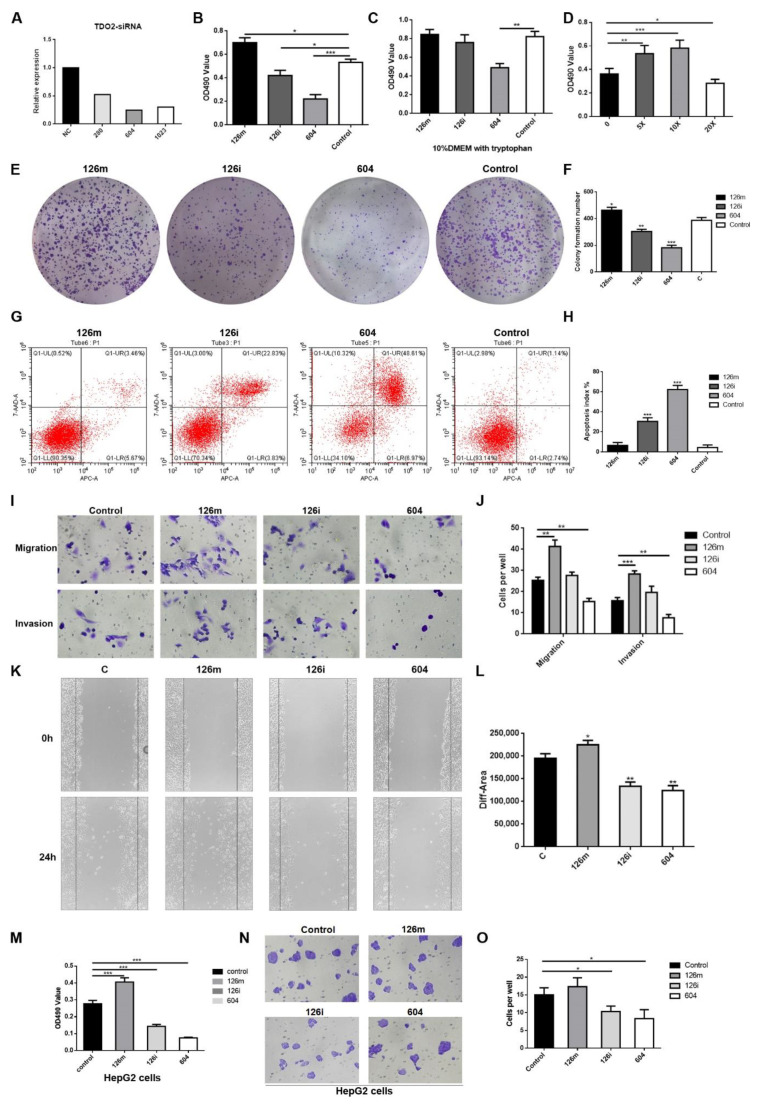Figure 3.
MiR-126-5p can significantly promote the proliferation, migration, and invasion of HCCLM3 cells, and inhibit apoptosis. (A) Selection of the most effective siRNA of TDO2. (B) Effect of miR-126-5p on HCCLM3 cells growth determined by CCK-8 assays. Group 126m represents HCCLM3 cells transfected with miR-126-5p mimics; group 126i represents those treated with miR-126-5p inhibitor; group 604 represents siRNA-TDO2; NC represents the negative control group. (C) The transfected HCCLM3 cells recovered some activity after replacing the medium with 10× tryptophan. (D) The effects of media containing different multiples of tryptophan on cell activity. Group 0 represents the cells that were changed with normal medium after transfection. The n× group represents the medium that contained n times as much tryptophan as the original medium after transfection. (E,F) Colony formation assays in HCCLM3 cells. (G,H) Effect of miR-126-5p on HCCLM3 cell growth determined by flow cytometry. (I,J) Transwell assays results in HCCLM3 cells. (K,L) Wound healing assays showing the miR-126-5p-related promotion of the migratory abilities of HCCLM3 cells. (M) Effect of miR-126-5p on HepG2 cells growth determined by CCK-8 assays. (N,O) Transwell assays results in HepG2 cells. All experiments were conducted at least three independent times, and all the values were presented as mean ± SEM. * p < 0.05, ** p < 0.01, *** p < 0.001.

